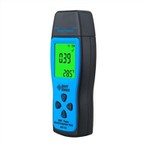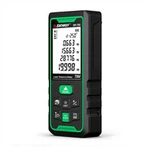Technical guidelines and applications for switching power supply PCB layout
Nowadays, since the switching power supply will generate electromagnetic waves and affect the normal operation of its electronic products, the correct power supply PCB layout technology becomes very important.
In many cases, a power supply that is perfectly designed on paper may not work properly when it is first commissioned, because there are many problems with the PCB layout of the power supply. For example, for the schematic diagram of a step-down switching power supply on a consumer electronic device, the designer should be able to distinguish the components in the power circuit and the components in the control signal circuit on this circuit diagram, but if the designer uses this power supply If all the components in the circuit are treated as the components in the digital circuit, the problem will be quite serious. Switching power supply PCB layout is completely different from digital circuit PCB layout. In digital circuit layout, many digital chips can be automatically arranged by PCB software and the connecting lines between chips can be automatically connected by PCB software. The switching power supply typesetting by automatic typesetting will definitely not work properly. Therefore, designers need to master and understand the correct switching power supply PCB layout technical rules.
Switching power supply PCB layout technical rules
The capacitance of the bypass ceramic capacitor should not be too large, and its parasitic series inductance should be minimized. Multiple capacitors connected in parallel can improve the high-frequency impedance characteristics of the capacitor
When the operating frequency of a capacitor is below fo, the capacitive impedance Zc decreases with the increase of frequency; when the operating frequency of the capacitor is above fo, the capacitive impedance Zc will become like the inductive impedance and increase with the increase of frequency; when the capacitor works When the frequency is close to fo, the impedance of the capacitor is equal to its equivalent series resistance (RESR).
Electrolytic capacitors generally have a large capacitance and a large equivalent series inductance. Because of its low resonant frequency, it can only be used for low frequency filtering. Tantalum capacitors generally have larger capacitance and smaller equivalent series inductance, so its resonant frequency will be higher than that of electrolytic capacitors, and can be used in medium and high frequency filtering. The capacitance and equivalent series inductance of ceramic chip capacitors are generally very small, so its resonant frequency is much higher than that of electrolytic capacitors and tantalum capacitors, so it can be used in high-frequency filtering and bypass circuits. Since the resonant frequency of small-capacity ceramic capacitors is higher than that of large-capacity ceramic capacitors, ceramic capacitors with too high capacitance cannot be selected when selecting bypass capacitors. In order to improve the high-frequency characteristics of the capacitor, multiple capacitors with different characteristics can be used in parallel. It is the improved impedance effect after multiple capacitors with different characteristics are connected in parallel. It is not difficult to understand the importance of this typesetting rule through analysis. Shows the different ways of routing the input supply (VIN) to the load (RL) on one PCB. In order to reduce the ESL of the filter capacitor (C), the lead length of the capacitor pin should be kept as short as possible: while the traces of VIN positive to RL and VIN negative to RL should be as close as possible.






